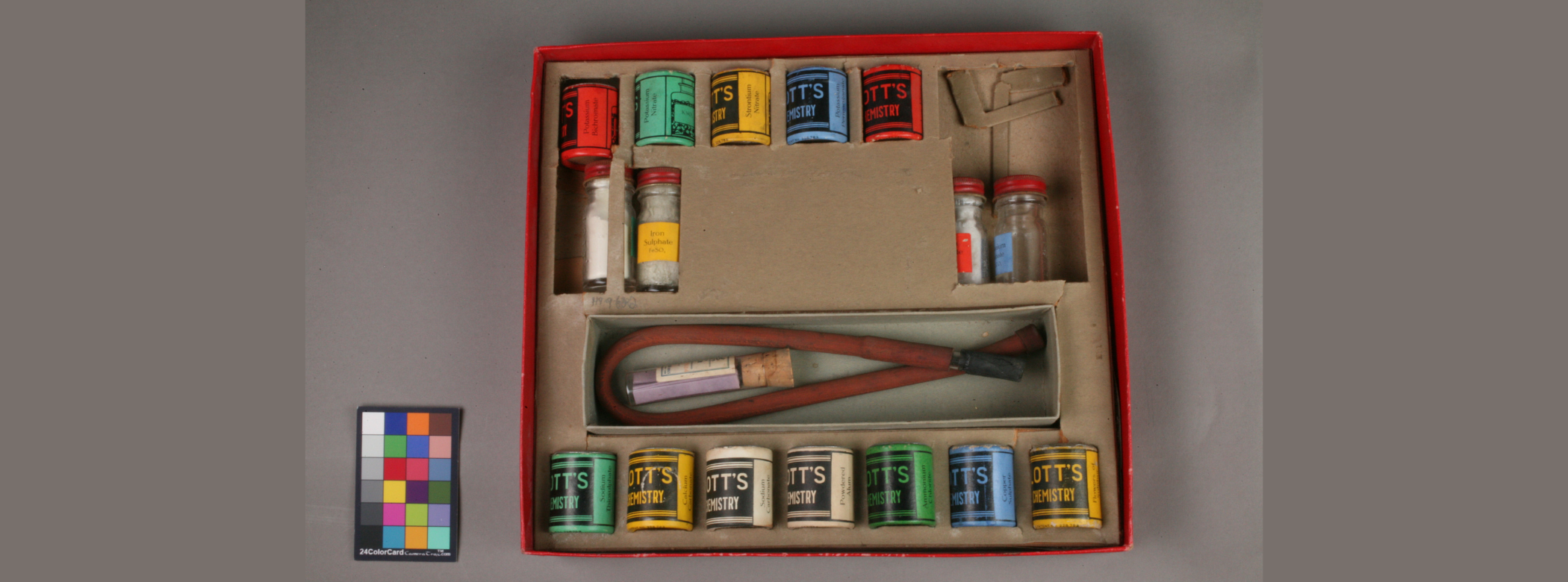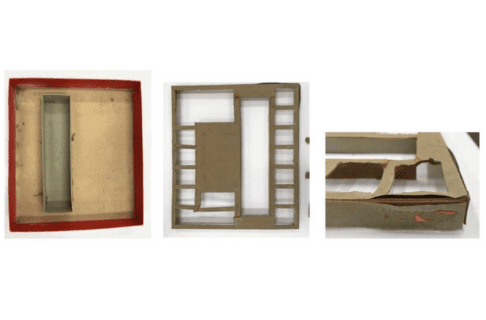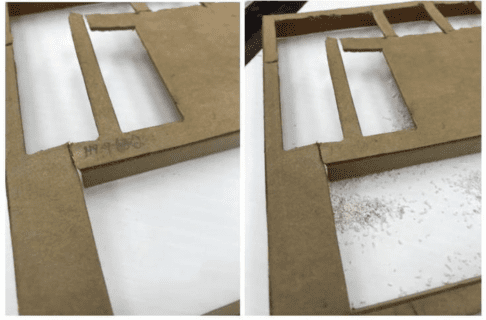This home chemistry set came into the conservation lab for treatment after being selected for display in the soon to be constructed Winnipeg Gallery which is part of the Museum’s Bringing Our Stories Forward Capital Gallery Renewal Project. The set was acquired by the museum in 1979 and was manufactured by Lotts Bricks Ltd., a toy company based in Waterford, England.
It was noticed during an initial condition report that the cardboard insert was weak, ripped, and warped in several locations and needed to be stabilized before display. Since the cardboard had warped over time, the loose and broken parts would no longer fit together and therefore the cardboard would need to be reshaped before repair could be completed.

Detail images showing damage in upper left and right corners of chemistry set.
Catalogue Number: H9-9-622 © Manitoba Museum
The chemistry set consists of a red cardboard box which has a grey blue box adhered to it. There is also a moss green cardboard insert which holds the pieces of the set in place. There are twelve cardboard canisters with pop-off metal lids, and four glass bottles with metal screw-on lids. All of these containers still have their labelled chemicals inside. There is a small glass tube with a cork stopper which containing purple coloured litmus paper. Hidden under the cardboard insert is a small envelope labelled ‘Litmus Paper’ which has two pink papers inside. Lastly, there is an orange rubber tube with a glass end covered in a black coating.
In the conservation lab, the set was disassembled and the individual parts were examined. In general all surfaces of the set were dusty and covered in grime. The red outer box was very stable but the moss green cardboard insert was ripped in several areas and the structure was warped. The canisters and glass bottles have small areas of corrosion on the metal lids.
The first step was to clean every surface of the set. This involved brushing all the components with a soft natural hair brush which loosened dust off the surface and allowed the dust to be carefully vacuumed away. The cardboard and canisters were further cleaned by gently rubbing eraser bits over the surfaces to pick up grime and loosen ingrained dirt.
The most complicated step of the treatment was reshaping the cardboard insert. The insert was reshaped by misting the surface with distilled water, causing the paper structure to relax, which allowed for the manual repositioning of the cardboard to the original position. The insert was placed onto custom cut wood blocks which were covered in absorbent paper (blotter paper). The wood form was clamped and weighed down which prevented the cardboard from deforming during the drying process.
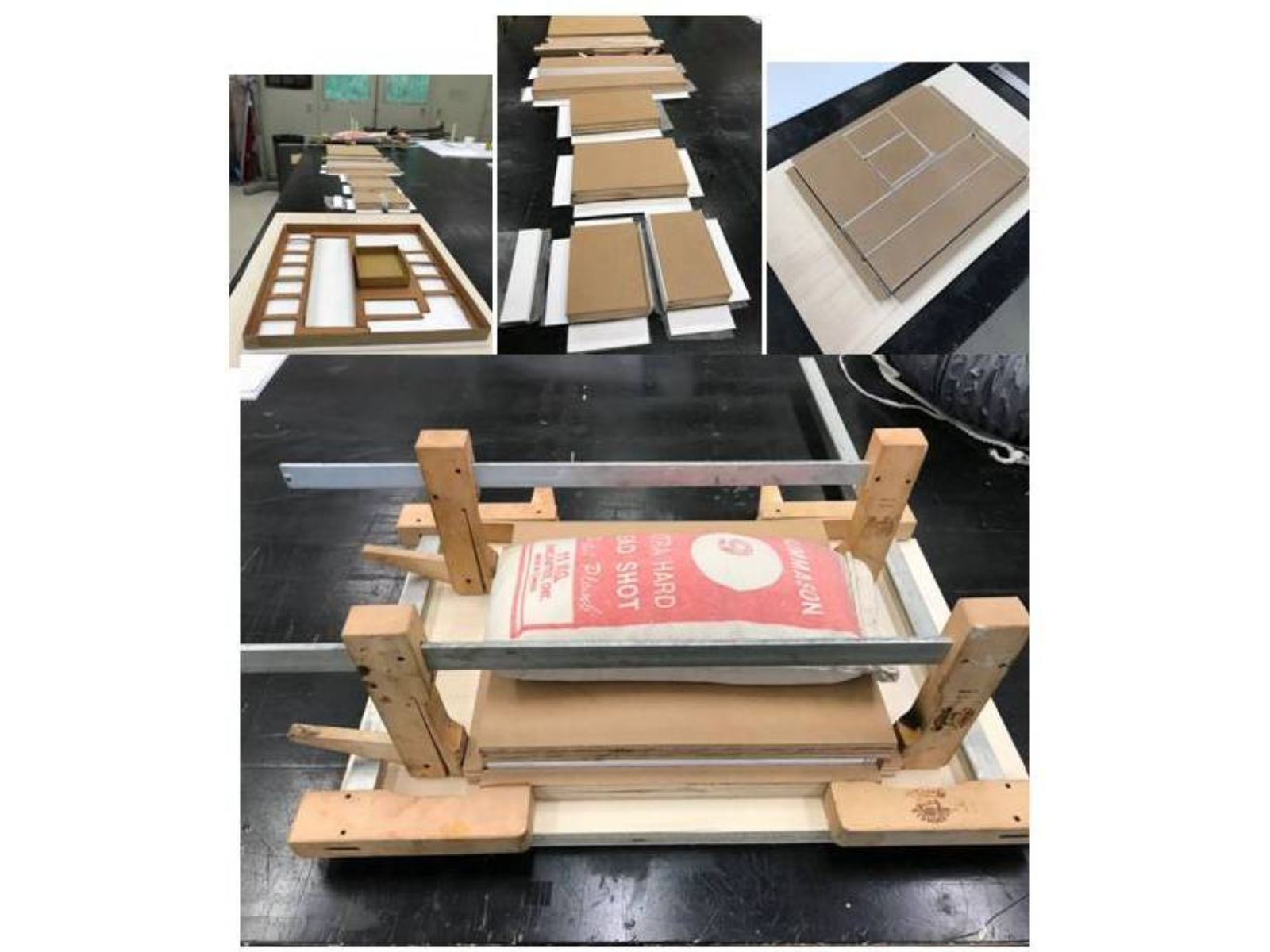
(Top left) Cardboard insert wetted and being reshaped.
(Top middle) Blocks of wood with blotter papers.
(Top right) Blocks of wood with blotter papers placed onto wetted cardboard.
(Bottom) Wood inserts clamped and weighted while drying.
© Manitoba Museum
After a week, the cardboard insert was dry and removed from the wood form. The cardboard was then repaired by reattaching the loose sections and reinforcing ripped areas with light-weight mending paper and conservation grade cellulose based adhesive. The ripped cardboard was further repaired on the front of the insert by adhering tinted light-weight mending paper to breaks in the structure.
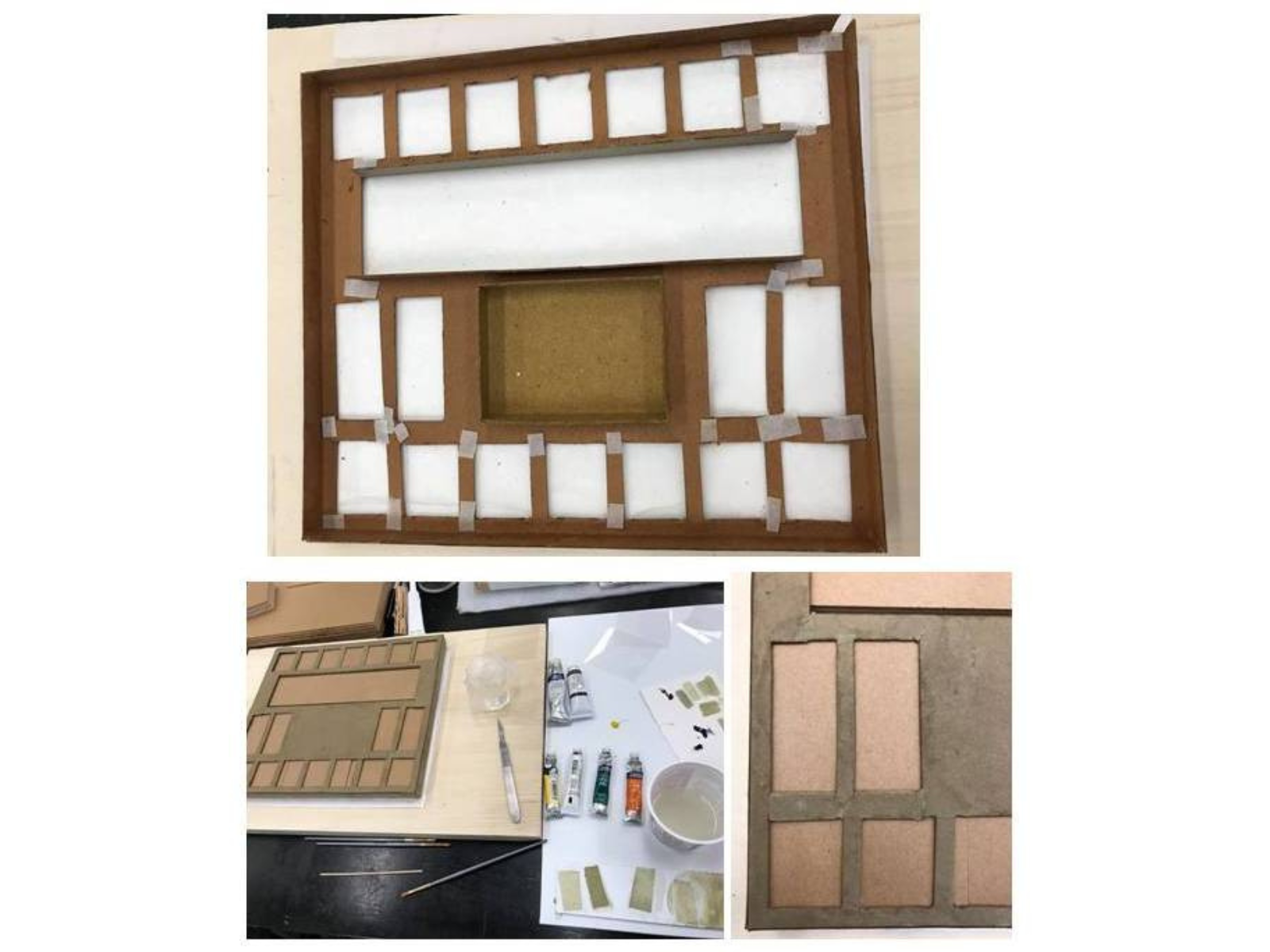
(Top) Cardboard insert being repaired with light-weight mending paper and conservation grade adhesive.
(Bottom left) Tinting mending paper with watercolours to match cardboard.
(Bottom right) Tinted light-weight mending paper used to stabilize and hide rips in the structure of the cardboard.
© Manitoba Museum
Once everything was stable and dry the insert was set back into the red box and finally all the components were set back into place.
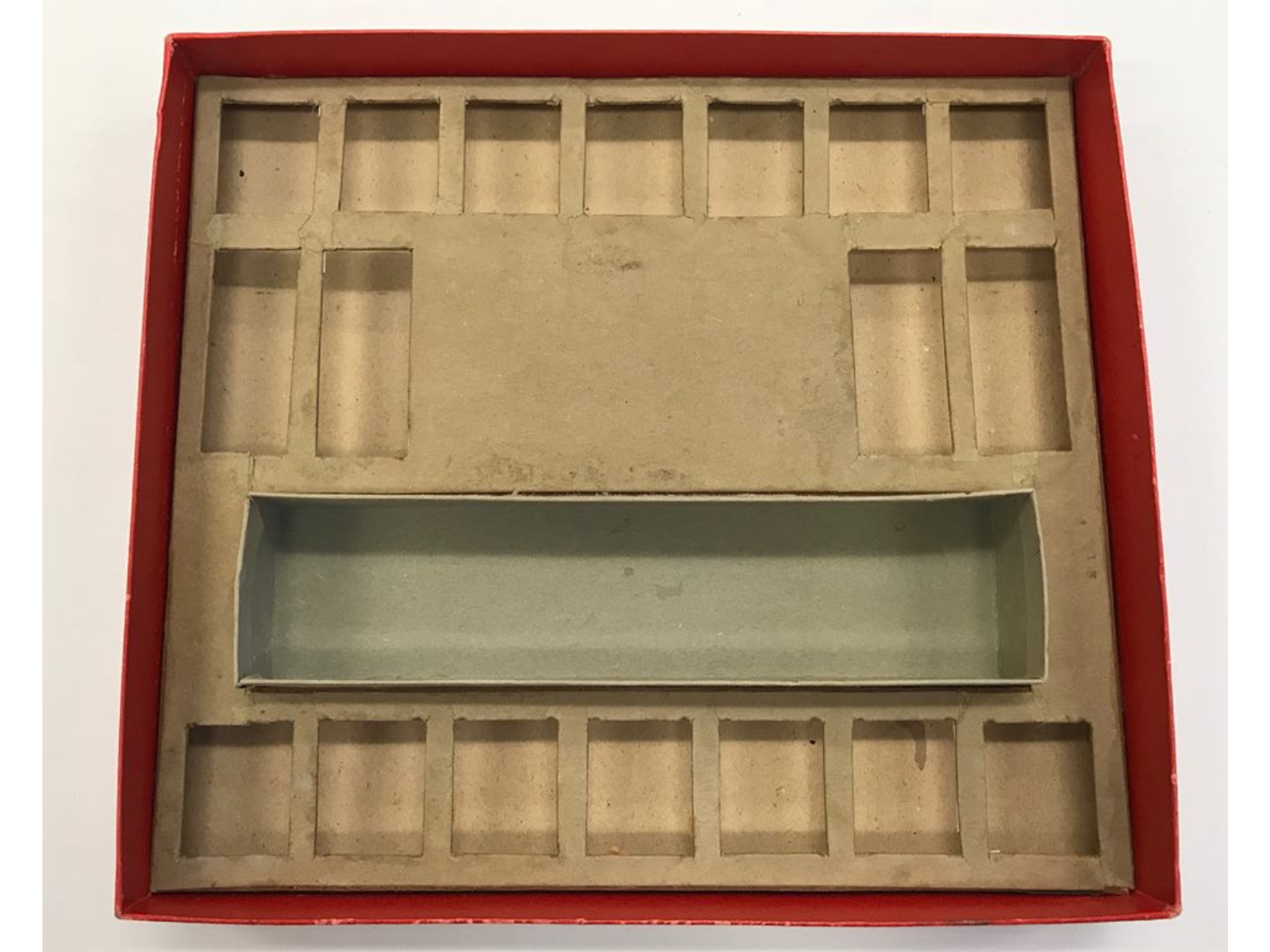
Stabilized cardboard insert placed back into place.
© Manitoba Museum
You will be able to see this home chemistry set in the new Winnipeg Gallery when it opens in the fall of 2019.
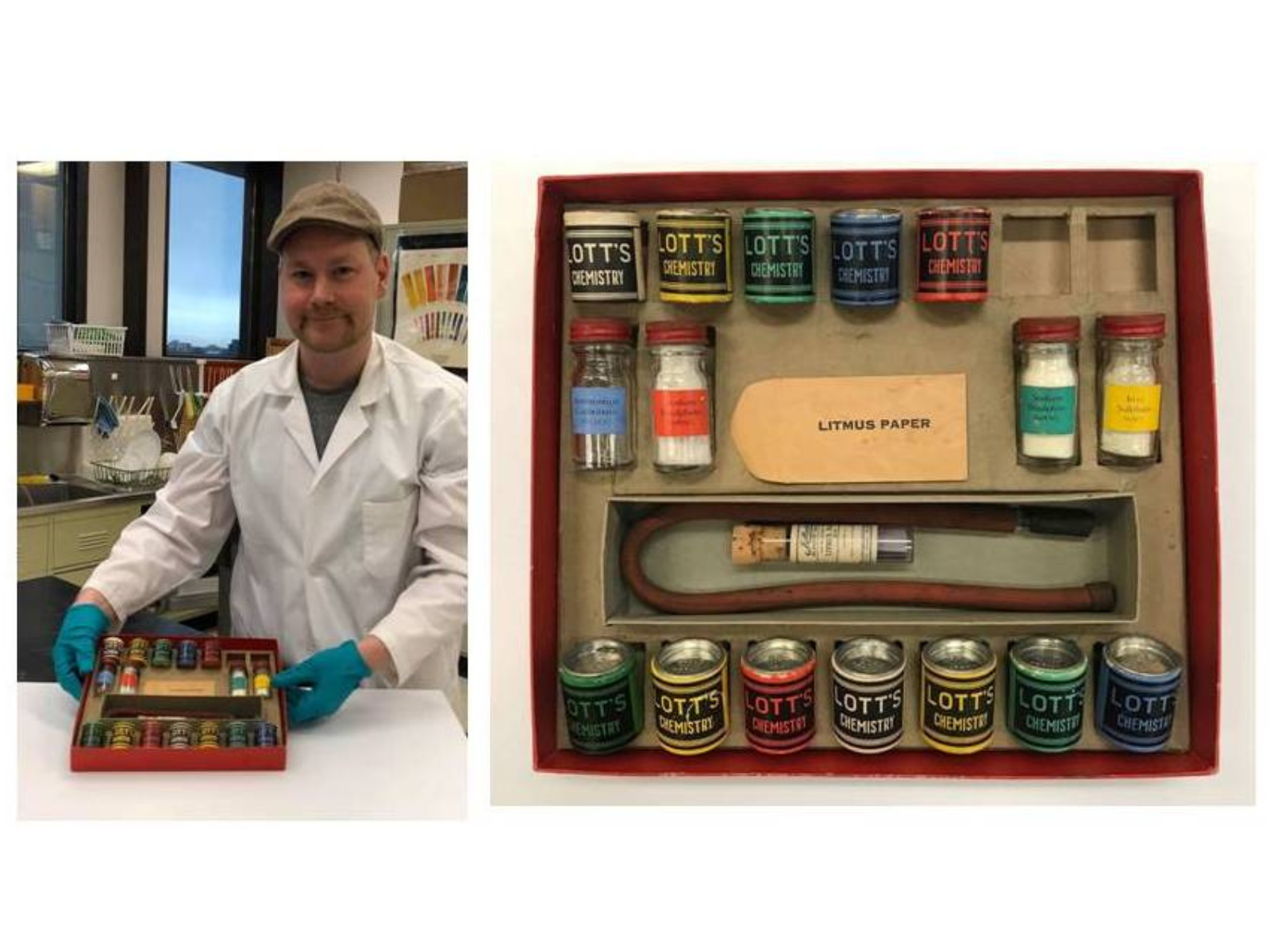
Reassembled and ready for display.
Catalogue Number: H9-9-622 © Manitoba Museum




